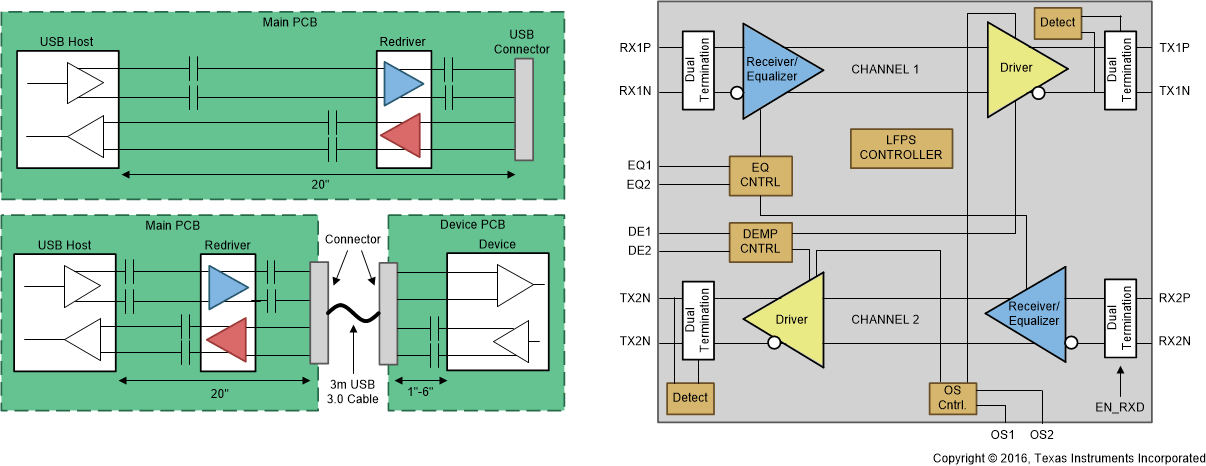SLLSEV9E July 2016 – November 2023 TUSB522P
PRODUCTION DATA
- 1
- 1 Features
- 2 Applications
- 3 Description
- 4 Revision History
- 5 Pin Configuration and Functions
- 6 Specifications
- 7 Detailed Description
- 8 Application and Implementation
- 9 Device and Documentation Support
- 10Mechanical, Packaging, and Orderable Information
3 Description
The TUSB522P is a fourth generation, dual-channel, single-lane USB 3.1 GEN1 redriver and signal conditioner supporting 5Gbps. The device offers low power consumption on a 3.3 V supply with its ultra-low-power architecture. The redriver also supports the USB 3.1 low power modes, which further reduces idle power consumption.
The dual-channel capability enables the system to maintain signal integrity on both transmit and receive data paths. The receiver equalization has three gain settings to overcome channel degradation from insertion loss and inter-symbol interference. These settings are controlled from the EQ pins. To compensate for transmission line losses, the output driver supports configuration of De-Emphasis with pins DE. Additionally, automatic LFPS De-Emphasis control allows for full USB 3.1 compliance. These settings allow optimal performance, increased signaling distance, and flexibility in placement of the TUSB522P in the USB 3.1 GEN1 path.
| PART NUMBER | TEMPERATURE | PACKAGE(1) |
|---|---|---|
| TUSB522P | TA = 0°C to 70°C | RGE (VQFN, 24) |
| TUSB522PI | TA = -40°C to 85°C |
 Simplified Schematic
Simplified Schematic